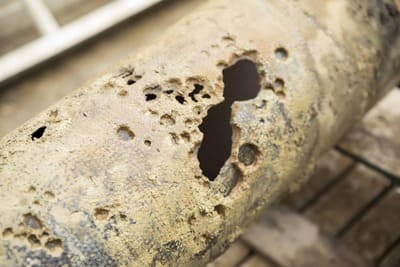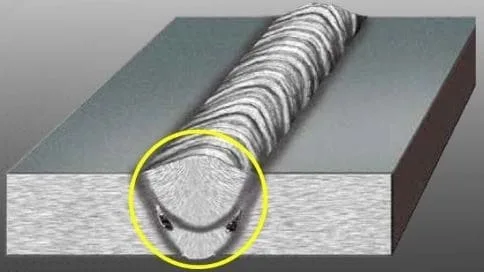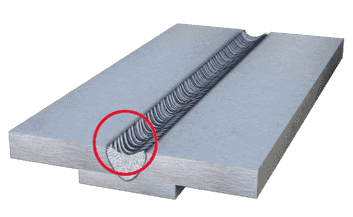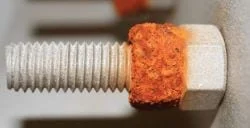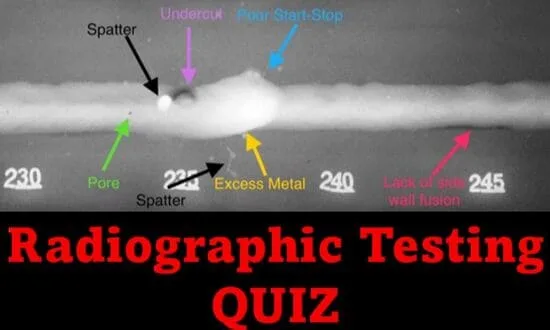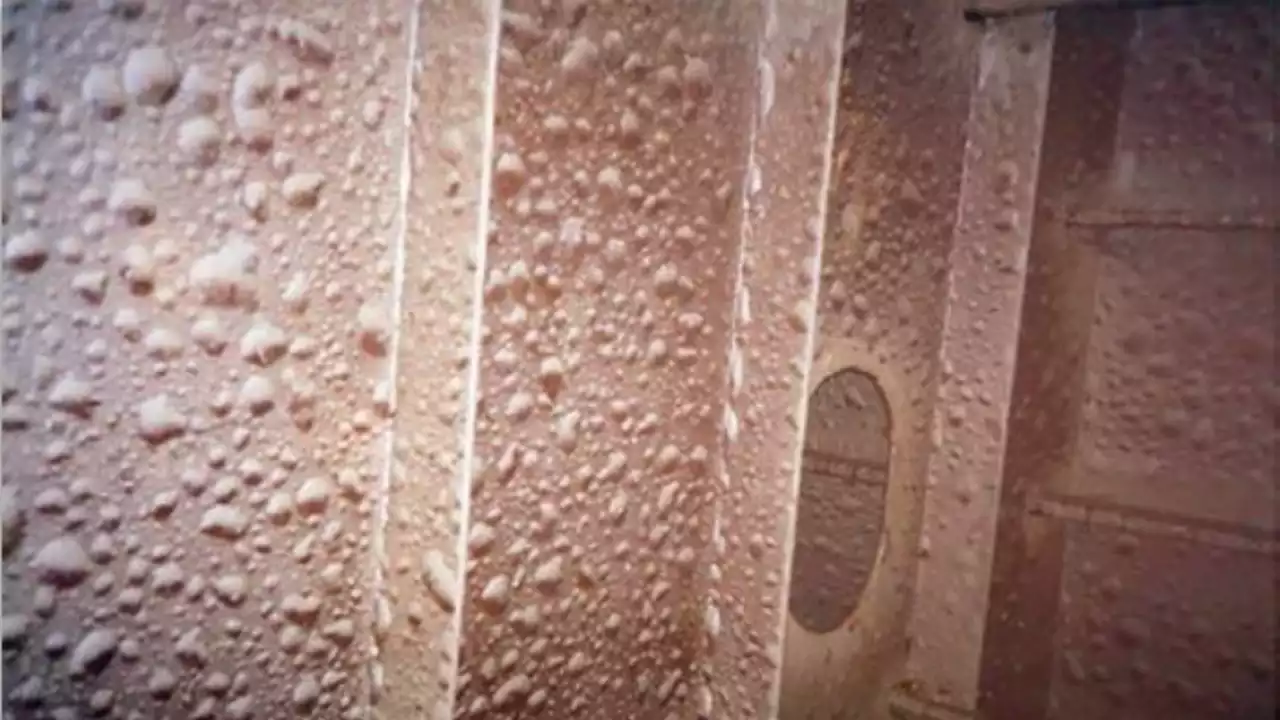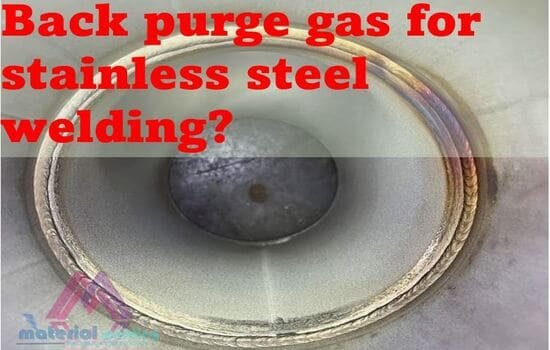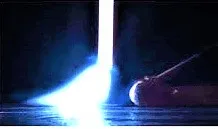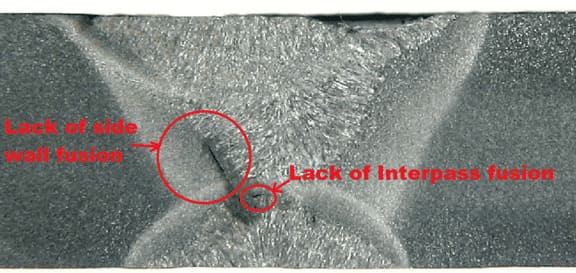Pinhole in welding is a common issue which are small holes in the welded seam. Pinholes can be caused by a variety of factors, from welding technique to the quality of materials used.
Pinholes are caused by gas bubbles that form in the molten weld pool and create tiny holes in the finished weld.
When pinholes occur during a welding job, it’s important to identify what caused them so that corrective measures can be taken.
This article will discuss the science behind pinholes in welding, as well as provide tips for preventing them.
How Pinholes in Welding occurs?
Pinholes in weld metal are the result of hydrogen gas becoming trapped during solidification.
This gas serves as nuclei for the metal to solidify around, forming round or oblong discontinuities in the middle of the weld that resemble a string of beads.
To minimize the occurrence of pinholes, it is advisable to slow down the welding process and ensure that the weld joint surface is thoroughly cleaned beforehand.
Pinholes can take on a range of patterns, sizes, shapes, and quantities, and may be located anywhere within the deposited weld metal.
While some pinholes can be spotted on the surface of a weld, others may be hidden underneath, necessitating specialized testing such as radiography or ultrasonics for detection.
What causes Pinhole in Welding?
When conducting multi-pass welding, the location of Pinholes within the cross-sectional area of the weld relative to its depth can help determine their likely cause.
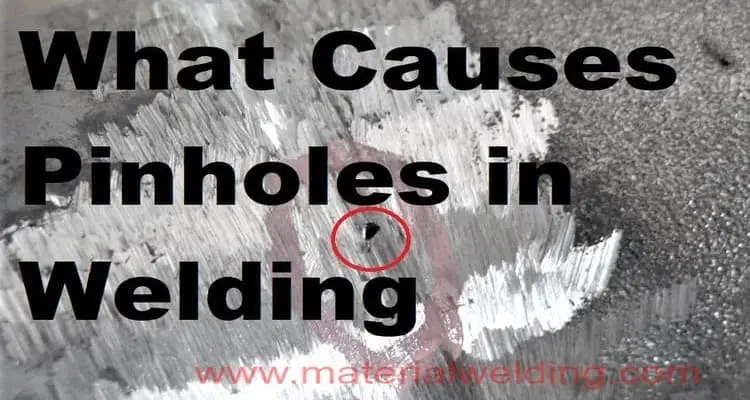
Pinholes often accumulate as additional passes are made, and it’s important to completely eliminate them before adding any further passes to avoid reaching an unacceptable level of Pinhole density in the final weld.
There are several potential reasons why Pinholes may occur during welding, which can be broadly categorized as follows:
a) Moisture,
b) The chemical composition and structure of the parent material,
c) Surface impurities and contaminants,
d) Defective electrodes, fluxes, shielding gases, or slag, and
e) Operator techniques.
Moisture
If flux-coated electrodes or wires, or external flux used in welding methods such as submerged arc or electroslag, absorb moisture, Pinholes can result.
To prevent this from happening, it’s important to store consumables and fluxes in a controlled environment.
Different codes and standards may mandate specific procedures for storing welding consumables, E.g., CSA Standard W59 and AWS D1.1.
The storage conditions required will depend on the type of flux being used, with basic flux systems necessitating storage temperatures above 250°F (120°C) to keep moisture levels at an acceptable level for producing a weld deposit with a low hydrogen rating.
Parent Material
Choosing the appropriate filler metal that matches the material to be welded is critical, as failure to do so may lead to the formation of Pinholes – especially in materials with high sulfur content.
In addition, certain elements like zinc in galvanized steels can also result in excessive Pinhole in welding formation after welding.
When working with materials such as aluminum, which have dense oxide layers, it’s important to take care during cleaning to prevent contamination with moisture or oils.
During fabrication, metals can come into contact with various contaminants that can trigger the formation of Pinholes.
Some examples of these contaminants include oil, grease, paint, and oxide. Rust and mill scale can also trap contaminants and contribute to the formation of Pinholes.
Insufficient Flux Coverage
If there isn’t enough flux coverage during submerged arc welding, it can result in the appearance of scattered surface Pinholes.
Slag Residue
The presence of slag on the surface of tack welds or internal weld beads could potentially lead to the formation of Pinhole in welding.
Shielding Gas
In some cases, Pinholes related to shielding gases may arise from issues like poor distribution of the gas within the arc and surrounding areas, insufficient or excessive gas flows, or impurities that have accumulated in the gas due to hoses, connections, or the torch or gun assemblies.
When preparing to use pure argon for GMAW of aluminum, it’s crucial to be aware that hoses, regulators, and cables that have been utilized exclusively for welding steel with CO2 or CO2 mixtures can pose a risk of contamination and lead to the formation of Pinholes.
As a result, it’s necessary to clean or replace these components appropriately.
In addition, loose connections and fittings can allow atmospheric gases to enter the gas hoses and assemblies, which can also contribute to the development of Pinholes.
Welding Techniques
Pinhole can arise in manual welding scenarios due to a variety of factors, such as poor electrode manipulation, excessively high arc voltages, incorrect electrode angles, or improper weaving techniques.
Pinholes in MIG welding, causes and prevention
Pinholes in MIG welding are small holes or voids in the welded area that can lead to significant structural issues if not identified and corrected. Some causes of pinholes in MIG welding include:
- Inadequate shielding gas: The shielding gas used in MIG welding protects the weld pool from contamination by atmospheric gases, such as oxygen and nitrogen. If there is insufficient shielding gas, these gases can react with the weld pool, leading to the formation of pinholes.
- Contaminated filler material: The filler material used in MIG welding can become contaminated with moisture or other impurities, leading to the formation of pinholes during welding.
- Poor weld joint fit-up: If the joint is not properly fit-up, it can cause gaps that can result in the formation of pinholes during welding.
- Excessive heat input: If too much heat is applied during MIG welding, it can cause excessive spatter and the formation of pinholes.

To prevent pinholes in MIG welding, here are some steps you can take:
- Ensure proper shielding gas flow: The proper flow of shielding gas is critical to prevent the formation of pinholes. The gas flow rate should be sufficient to protect the weld pool from contamination by atmospheric gases.
- Use clean filler material: Ensure that the filler material is clean and free from contaminants such as moisture or oils.
- Proper joint fit-up: Ensure that the joint is properly fit-up to minimize gaps that can result in the formation of pinholes.
- Proper welding technique: Use proper welding technique to control heat input and avoid excessive spatter.
- Conduct post-weld inspection: Inspect the weld after it has cooled to identify any pinholes that may have formed during welding.
How to Check for Pinholes
Pinholes in welds are difficult to detect visually, so non-destructive testing methods are typically used to identify their presence.
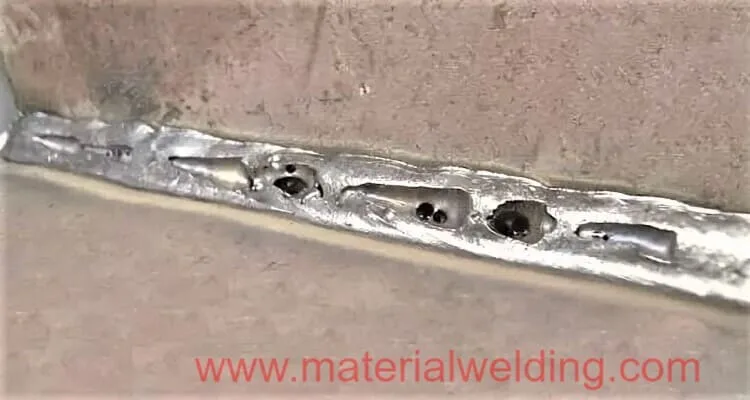
Here are a few common methods for checking for pinholes in welds:
- Penetrant Testing: This method involves applying a liquid penetrant to the surface of the weld, which is then wiped off and followed by the application of a developer. Any pinholes present will be revealed by the penetrant that seeps out during the wiping process.
- Radiography: X-rays or gamma rays can be used to detect the presence of pinholes in welds. This method is particularly useful for detecting internal pinholes that may not be visible on the surface.
- Ultrasonic Testing: Ultrasonic waves are used to identify voids and inclusions in the weld material. This method is particularly useful for detecting pinholes that are deep within the weld.
- Visual Inspection: While not the most reliable method, a trained inspector may be able to identify pinholes by closely examining the surface of the weld.
It’s important to note that the best way to prevent pinholes in welds is to follow proper welding techniques and to ensure that all materials and equipment are stored and handled correctly to prevent contamination or moisture buildup.
How to Check for Pinholes in Coating/ Painting
A holiday tester is a commonly used tool to check for pinholes in coating or painting.
The process involves applying an electric charge to the surface of the coating, and then using a probe to scan the surface.
The tool is designed to detect any areas where the electric charge is able to penetrate through the coating, indicating the presence of a pinhole.
The tool may emit an audible or visual signal when it detects a pinhole, making it easy to identify the location of the defect.
It’s important to note that the appropriate voltage setting should be used to match the coating thickness and type to avoid damaging the coating or missing small pinholes.
How to fix PIN-HOLES in YOUR Welds
Pinholes in welds can be fixed by following these steps:
- Identify the cause of the pinholes: Pinholes can be caused by a variety of factors such as moisture, surface impurities, faulty electrodes, or poor welding techniques. It’s important to identify the root cause of the problem before attempting to fix it.
- Clean the surface: The surface of the weld should be cleaned thoroughly to remove any impurities or contaminants that may have contributed to the pinholes. This can be done using a wire brush, grinder, or other cleaning tools.
- Adjust the welding parameters: If the pinholes are caused by poor welding techniques or incorrect parameters, adjustments can be made to the welding process. This may include changing the electrode, adjusting the voltage, or using a different shielding gas.
- Use a different welding technique: In some cases, a different welding technique may be more appropriate for the job at hand. For example, if pinholes are occurring in a submerged arc welding process, switching to a different technique such as gas tungsten arc welding (GTAW) may help.
- Apply additional passes: If pinholes occur due to a lack of material or insufficient penetration, additional passes may be necessary to fill the voids and create a more solid weld.
- Conduct quality checks: After making any necessary adjustments, it’s important to conduct quality checks to ensure that the pinholes have been eliminated. This may involve non-destructive testing methods such as x-rays or ultrasonic testing.
pinholes in Casting
Microshrinkage or gas evolution during solidification can result in the formation of tiny holes, which are a type of Pinhole that can be found in castings.
In wrought products, these small holes may also appear due to the removal of inclusions or microconstituents during the macroetching process of transverse sections.
Causes and prevention of Pin Hole in Spot Welding
In Spot welding, if the electrode force is removed before the welds cool from liquids, excessive heat can be generated which leads to heavy expulsion of molten metal, causing a pinhole in welding.
Similarly, if the parts being welded are poorly fitted, most of the electrode force may be required to bring the faying surfaces into contact, which can also cause a pinhole.
The presence of a pinhole can reduce the fatigue strength of a weld if it is in tension or if a crack or imperfection extends into the periphery of the weld area.
Additionally, a pinhole can increase the corrosion of the weld by allowing corrosive substances to accumulate in the cavity or crack.
